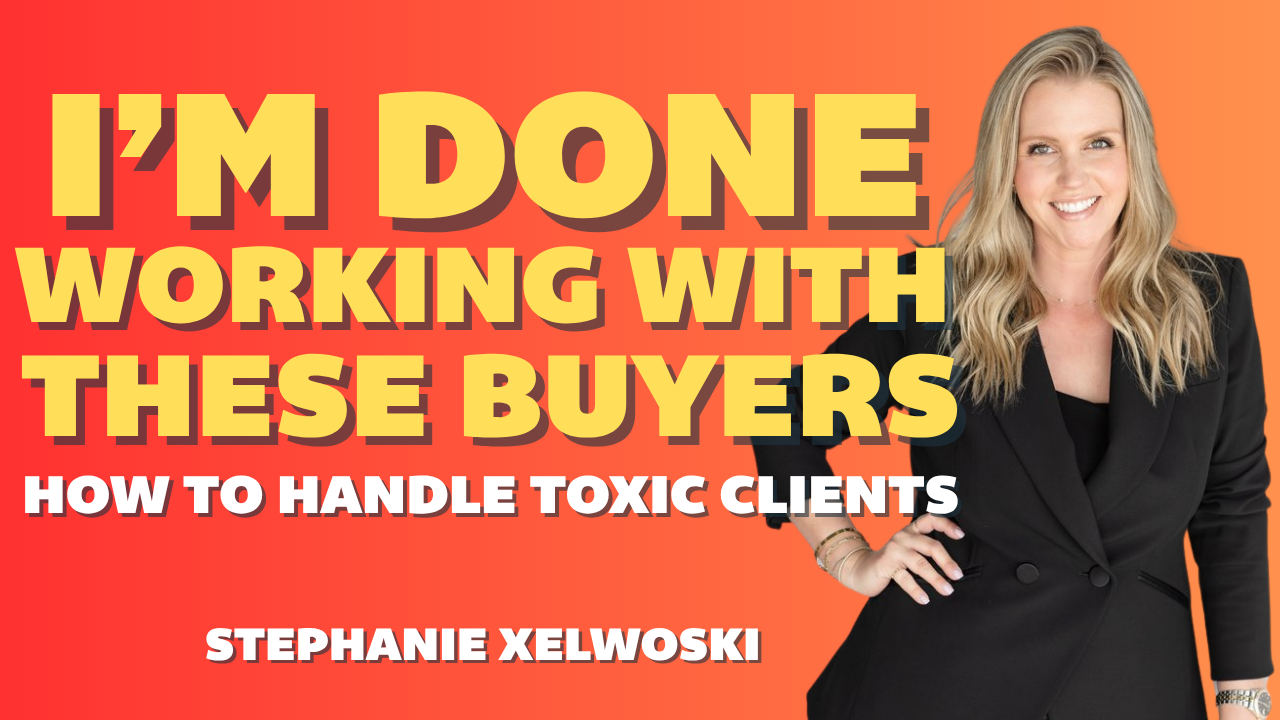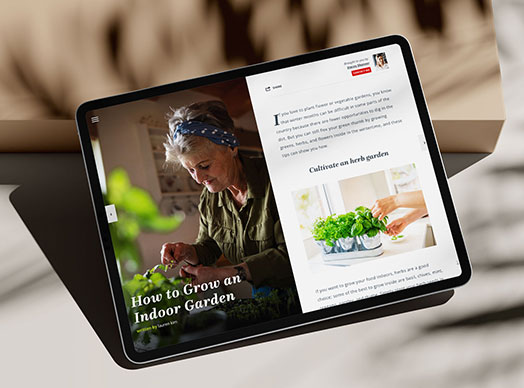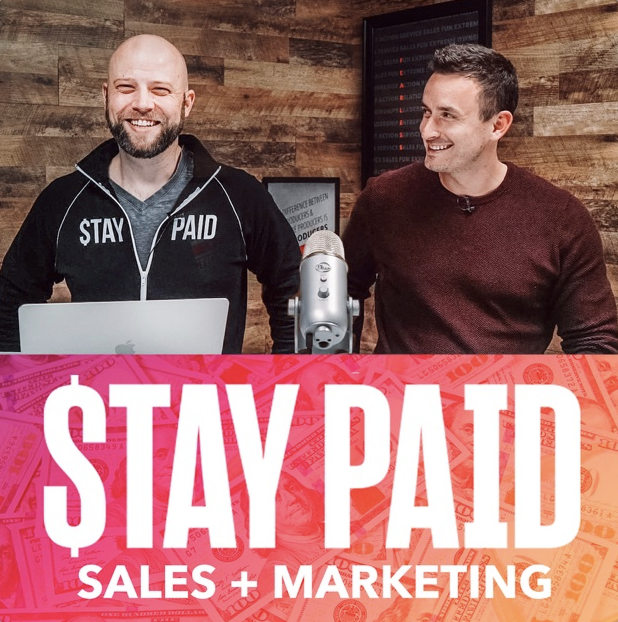Ep 126: DEEP DIVE – Deirdre Van Nest – Command Any Room with These 4 Public Speaking Tips
Deirdre Van Nest is a top-rated international keynote speaker, trainer, and creator of Crazy Good Talks—a system that has taught thousands of financial professionals, business leaders, and sales professionals how to use public speaking engagements to bring in more business.
Today on Stay Paid, Deirdre offers her expertise and shares strategies that can help you become a more courageous and capable speaker.
Key Points:
- You don’t need confidence to be a great speaker—just courage.
- The CETA system will help you keep your audience engaged.
- If you open strong, your audience is more likely to stick with you.
Q: Introduce yourself to our audience.
I used to be one of the people who was scared to death of public speaking. I like to share that because I want you to know that if I can do this, you can do this.
It doesn’t take confidence to be a great speaker. It takes courage. You can do this—you just have to be willing.
You’ve also got to learn a formula and a system.
My relationship with public speaking started in the 9th grade when my acting teacher Mr. Smith asked me to read a scene with my classmate Jennifer. I had previously beaten Jennifer for the role in Scrooge—our 8th grade play. After we were done, Mr. Smith looked at Jennifer and told her she could be the next Meryl Streep. He looked at me and said, “Deirdre, that stunk.”
That was a rough time in my life. Those words made me retreat. I wish I could say I chalked it up to a bad day, but I didn’t speak in public for 24 years. In fact, when I went to get my Master’s, some students asked if I’d run for class president. I wouldn’t because I’d have to give a speech.
I never wanted to hear the words “you stink again.”
In 2007, I got certified as a Fearless Living coach. I started helping real estate agents, financial advisors, and other professionals get past the fears that were holding them back in their businesses.
At the time, everyone was telling me to host a podcast or to start doing public speaking. How could I coach people to get past their biggest fears if I won’t do the same thing?
So, I started speaking. Over time, I started getting good at it. I started getting paid to speak. But I still wasn’t bringing in clients.
I studied with a guru to get good at keynoting, then I studied with a guru to get good at back of the room sales. I started sharing strategies with my clients, who also got amazing results.
Q: How do your clients generate leads through public speaking?
There is a science behind public speaking. I was telling clients this morning, “I never want to hear from your unscripted heart.”
When people say that they’re going to speak from the heart, this means they’re going to ramble. They don’t really care what you think.
You can speak from the heart while still drawing your audience to a logical conclusion. There’s a certain way to open, to transition into specific points, to make the offer, and to close. There’s a formula and a science to doing this.
If you’re speaking and not getting results, it’s because you don’t know the formula.
When I first started speaking, I wanted to find a way to structure my message. I found my mentor, Craig Valentine, and did everything he said. It really helped me get over the fear of speaking, knowing that I had a process to hang onto.
When I still wasn’t getting clients, I knew something was missing. That’s when I met with a couple other gurus and filled in the other pieces. In my training, I combine all these pieces into one.
Q: What are some general tips for anyone who is speaking?
The first thing to consider is that any time you’re speaking to three or more people with the goal of them buying, that’s a speaking engagement. Most professionals are too cavalier when they get up to speak. They don’t realize the opportunity they have.
When you stand up in front of people, the person who can use your services is probably in the room. If you don’t impress them, you’ll miss out.
The second thing is to consider how you want your audience to feel, think, and act differently once you’ve spoken. Then, you need to reverse engineer that result. If you’re a chiropractor who wants to persuade people that the best way to absorb nutrition is to work with a chiropractor—to sign them up for a new patient exam—you need to build your whole presentation around that.
So many times, people will have a presentation and then the pitch. They are two separate things. But the presentation needs to lead to the pitch and convince people to work with you.
You also need to open with a bang. Get people away from their phones, or thinking about what’s for dinner. I have a client who does presentations on Medicare. It’s not super exciting, but it can be made really interesting. One of her open lines is, “Cancer, Alzheimer’s, diabetes … are these the things that are keeping you up at night?”
One of my openers is, “Raise your hands if you never want your audience to look like this.” And then I show a slide of a really bored-looking audience.
Asking a question is the best way to get an audience locked and loaded on you. If you get your audience on board in the beginning, they’re more likely to stay with you the rest of the presentation.
I have two financial advisor clients who do the same presentation every year. I went and watched their presentation. They were giving the same presentation the next day. We didn’t have time to change everything. But on day two, they opened with a bang—and they got twice the appointments.
Q: How do you get someone to go from simply absorbing the information to setting an appointment?
The conversion point starts the moment you take the stage and open your mouth. There is no single close. The whole presentation is this beautiful symphony. Your words matter.
Your words and ideas are strung together in a way that leads people to the logical conclusion you want. The whole presentation is about teaching great content while also telling stories. Even now, I’m weaving stories into my examples.
Q: How do you bring an audience back when you see them drifting?
Here’s where I’m a bit different than the typical speaking instructor. I am a keynoter—companies hire me to come in and do training.
One of my goals when I speak is to know that I have added value to the lives of everyone in the audience. Coming from that framework, I’m also teaching my clients to give people real content that will change their lives. It is not just about sales.
If you’re telling stories and giving practical information people can use, it’s hard to lose people. You’re giving them tangible content.
Adult learners tune out after about 7–10 minutes, even if they’re interested in the content. You need to keep the energy moving and shifting in the room at least that often. I like to do this about every 3–5 minutes.
That means you need to appeal to your audience in different ways and present the information in different ways.
To keep your audience engaged, follow the anagram CETA:
Conversational – Speak directly to people (use “you”). Avoid jargon. Speak the way you speak and not the way you write.
Experience – Tell a story, do an activity, use an analogy or a prop, or show a video.
Thinking – Get your audience thinking about themselves and their lives as these things relate to the content you’re speaking about.
Application – Give them something they can use right away to make their lives better, even if they never see you again.
I did a presentation for 400 advisors last fall. I had people come up to me afterward and say they didn’t look at their phone the entire time.
Nobody can hold an audience that long—it was simply because of the way everything was structured.
If you’re speaking and feel an audience’s attention starting to wane, the best thing you can do is give them a question or an activity.
Q: Which routines have driven success for you?
My biggest thing is my relationship with God. God is my Chief Marketing Officer. I promised to be out there planting all the seeds if God would help me bring them to harvest.
I read a lot of scripture. I had to rewire parts of my brain, because I had some bad ideas about myself implanted during childhood. I had a book that explained how different parts of scripture would help me think differently about these bad ideas that I’d learned about myself.
Another thing is my belief in doing whatever it takes to help other people be successful. I’m not going to let other people drive my actions. I’ve had some other businesses that have failed. But I decided to go back in one more time.
I knew that if I was going to give it one more shot, I had to take it seriously. I decided I wouldn’t let my feelings run the show. There were days where it was really tempting to just take a nap on the couch. But I’d make the decision to make an important call instead.
Eventually, I built up enough momentum where I couldn’t have taken a nap if I’d want to.
Another thing is that I let myself quit my business for a day. When I felt sorry for myself—which fortunately hasn’t happened in a while—I would “fire” myself for the day. I’d go off into the fantasy of what it would be like to be an employee, knowing I’d have to hire myself back the next day. By the end of the day, I was back into it.
The last thing is a spoken word recording. It’s called “Fearless Motivation: I Didn’t Come This Far to Only Come This Far.”
Before I get up to speak, I have what I call my Energy Preservation Plan. An hour before I speak, my phone goes on airplane mode. My focus and energy needs to be there. I listen to this spoken word recording, which is about growth, excellence, and living your life to your full potential. I listen to cool music, and then say a prayer.
Q: Knowing what you know now, what advice would you give your younger self?
I would tell her something I mentioned earlier: it takes courage, not confidence to be successful. If I knew that back then—and in my teens and twenties—I would’ve made many different decisions. I would’ve not held myself back in so many areas.
I was waiting for confidence. I didn’t take the stage for 20 years because the voice in my head told me I’d do it when I felt confident. Confidence never came.
I failed at entrepreneurial efforts because I wasn’t confident enough to ask for the sale. If I’d had courage, things could’ve turned out a lot differently.
I’ve pushed myself to be comfortable being uncomfortable. If you’re comfortable being uncomfortable, nobody can take that away from you.
Action Items
- Open up your speaking engagement with a bang by asking a question that will get your audience’s attention.
Connect with Deirdre:















 Soundcloud
Soundcloud iHeart Radio
iHeart Radio Spotify
Spotify Spotify
Spotify


